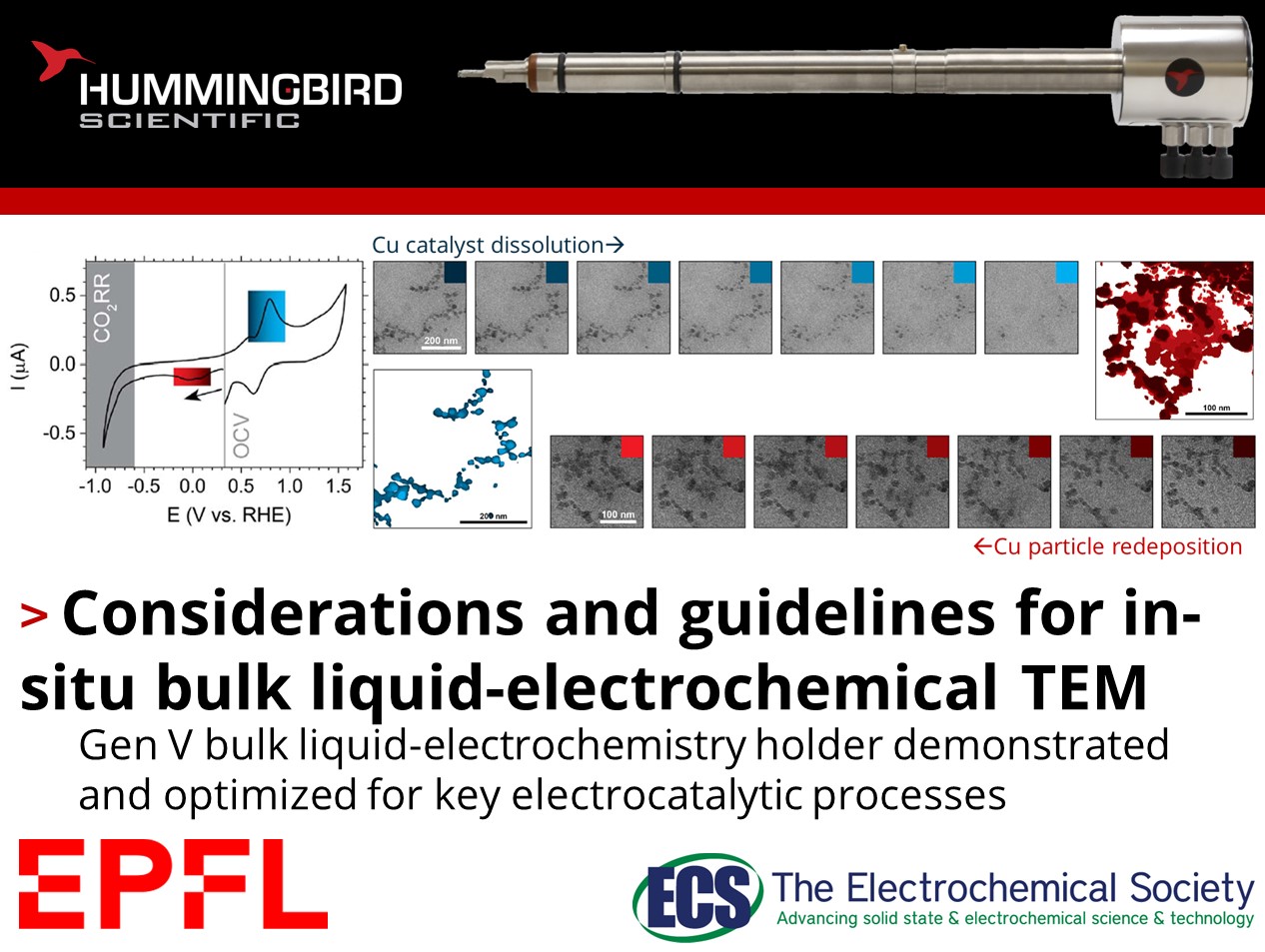What electrochemical or catalytic process would you be excited to see probed in situ with liquid-phase TEM?
Tzu-Hsien Shen, Vasiliki Tileli, and their colleagues at EPFL published recent work demonstrating the powerful capability of the Hummingbird Scientific Gen V in-situ bulk liquid-electrochemistry TEM sample holder to perform electrochemical experiments under in-situ TEM and spectroscopy. Important aspects and considerations of liquid-phase TEM (LPTEM) are discussed with respect to implementation of electrochemical experiments such as thickness and flow of liquid electrolytes, working, counter, and reference electrode configuration, and energy filtering.

a) Schematic illustration of the internal geometry of the liquid cell construction. b) EELS probing of molecular oxygen near a single IrO2 particle showing ADF image, thickness map, IrO2, O2, and electrolyte maps. c) In-situ bright-field TEM of the dissolution and redeposition of Cu catalyst for CO2 reduction reaction along with segmented particle projections and plot of cyclic voltammetry scan. Color code corresponds to the CV peaks and BFTEM image. Copyright 2023 IOP Publishing
The Hummingbird Scientific holder enabled optimization of imaging conditions for dissolution/redeposition during CO2 reduction by tracking morphological changes during cyclic voltammetry. The successful demonstration of the CO2 reduction reaction, oxygen reduction reaction, and oxygen evolution reaction, show the utility of the Gen V holder in electrochemical experiments where bulk-representative electrochemical data acquired with a true reference electrode is necessary, either as the primary reference electrode or to calibrate on-chip quasi-reference electrodes. Molecular O2 product formation around IrO2 particle during oxygen evolution was analyzed using electron energy loss spectroscopy (EELS), facilitated by the wide collection angle of the liquid cell design. The authors provide guidelines for electrochemical LPTEM experiments using the Hummingbird holder—from managing electron beam effects to considerations in electrochemical cell configuration. They demonstrate the holder’s versatility in tracking nanoscale catalyst structural dynamics, interactions, and chemistry.
Reference:
Tzu-Hsien Shen, Robin Girod, Jan Vavra, and Vasiliki Tileli, Journal of the Electrochemical Society 170 056502 (2023) DOI: 10.1149/1945-7111/acced4
Full paper Copyright © 2023 IOP Publishing
View All News

